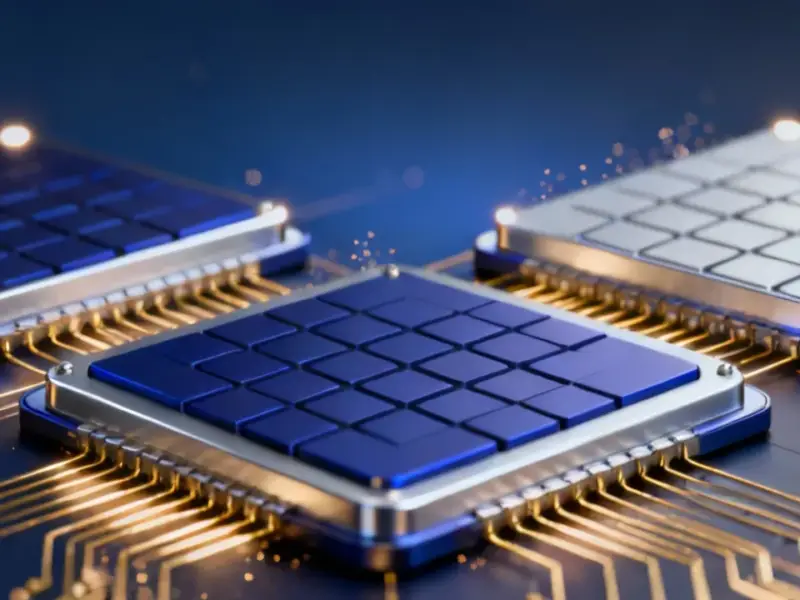According to TechCrunch, cloud-computing company Lambda has struck a multi-billion-dollar deal with Microsoft to deploy tens of thousands of Nvidia GPUs, including the high-performance GB300 NVL72 systems that began shipping in recent months. The announcement comes just hours after Microsoft revealed a separate $9.7 billion AI cloud capacity agreement with Australian data center business IREN, and follows OpenAI’s massive $38 billion cloud computing deal with Amazon announced earlier today. Lambda, which was founded in 2012 and has raised $1.7 billion in venture funding, has been working with Microsoft for over eight years, with CEO Stephen Balaban calling this deployment “a phenomenal next step in our relationship” according to the company’s press release. This flurry of massive AI infrastructure deals signals an unprecedented acceleration in cloud providers’ capacity expansion efforts.
The GPU Bottleneck Reality
While these headline-grabbing deals suggest unlimited AI compute capacity, the reality is more complex. The deployment of “tens of thousands” of Nvidia GPUs represents just a fraction of the global demand, particularly when you consider that training frontier models like GPT-5 or comparable systems can consume thousands of GPUs for months. The semiconductor supply chain constraints haven’t magically disappeared—Nvidia’s production capacity remains finite, and these massive commitments likely represent allocation agreements stretching over multiple years rather than immediate availability. What’s particularly telling is the focus on Nvidia’s GB300 NVL72 systems, which represent the absolute cutting edge of AI infrastructure but come with significant deployment complexity and power requirements that will test even Microsoft’s operational capabilities.
The Cloud Provider Power Consolidation
This deal represents another step in the dangerous consolidation of AI infrastructure among a handful of hyperscalers. Microsoft, Amazon, and Google now effectively control access to the computational resources required for cutting-edge AI development, creating a significant barrier to entry for smaller players and startups. The timing is particularly concerning—coming alongside OpenAI’s massive AWS commitment and Microsoft’s IREN deal, it suggests we’re entering an era where only the largest corporations can afford to compete in the AI space. This concentration of power extends beyond just compute access; it includes control over the entire AI development stack, from chip architecture to model deployment, creating potential antitrust concerns that regulators have been slow to address.
Sustainability and Financial Risks
The financial scale of these commitments raises serious questions about ROI and sustainability. When you combine Lambda’s multi-billion deal with Microsoft’s $9.7 billion IREN commitment and Amazon’s reported 20.2% AWS growth acceleration, we’re looking at capital expenditures that assume continuous, explosive AI adoption. However, the enterprise AI market remains largely unproven at scale, with many companies struggling to find use cases that justify the massive computational costs. The power consumption alone for these deployments is staggering—each NVL72 system can draw over 100 kilowatts, meaning tens of thousands of these units could require dedicated power infrastructure equivalent to small cities. If AI adoption doesn’t materialize as projected, these cloud providers could be left with billions in stranded assets and underutilized capacity.
The Nvidia Dependency Problem
What’s notably absent from these announcements is any meaningful diversification away from Nvidia’s ecosystem. Every major AI infrastructure deal continues to center around Nvidia GPUs, despite increasing competition from AMD, Intel, and custom silicon efforts like Google’s TPUs and Amazon’s Trainium. This creates a single point of failure for the entire AI industry—if Nvidia faces production delays, quality issues, or supply chain disruptions, it could stall progress across the entire ecosystem. Microsoft’s own custom AI chips, which have been in development for years, remain conspicuously absent from these high-profile deployments, suggesting they may not yet be competitive with Nvidia’s offerings for large-scale training workloads.
Market Implications and Winners
The clear winners in this arms race are Nvidia and the established cloud providers, while the losers are likely to be smaller AI companies and startups that will face both compute scarcity and pricing pressure. We’re already seeing evidence of this stratification—OpenAI can commit $38 billion to AWS because they have the revenue to support it, while smaller AI firms struggle to secure reliable GPU access at reasonable prices. This dynamic could ultimately stifle innovation by forcing AI development into the hands of a few well-funded incumbents. The rapid acceleration of AWS growth that Amazon’s Andy Jassy highlighted in their earnings announcement suggests the market is bifurcating between haves and have-nots in the AI compute space.




